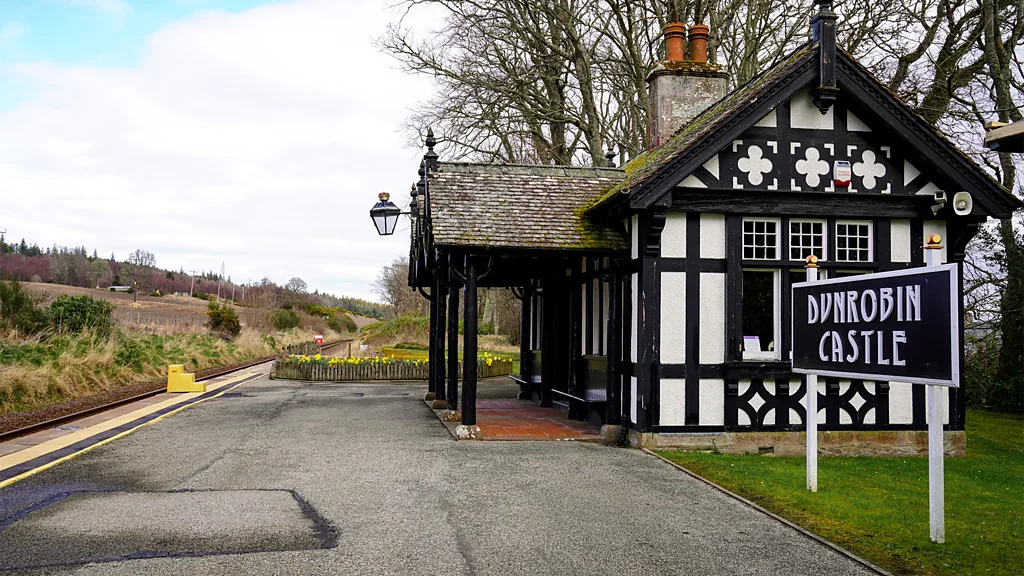As the train slowly departs Inverness Station in the early morning light, I feel a deep sense of anticipation. This journey on Scotland’s Far North Line not only brings back memories of summers once spent in the Highlands but also unites two of my greatest passions: the allure of rail travel and the wild beauty of Scotland’s peaty landscapes.
The Far North Line, stretching 168 miles from Inverness to Thurso and Wick, marks the northernmost railway route in Britain. Winding through sheep meadows, picturesque villages, and the vast Flow Country the largest blanket bog in the world this four-hour trip promises an immersion into Scotland’s raw, untamed heart.
Today, a crisp layer of frost dusts the ground, sparkling under the soft morning sun as the train heads past Conon Bridge and Invergordon. Life on board is quiet; fellow passengers cling to their coffees, lost in their own thoughts. As one train heads back toward bustling Inverness, ours moves deeper into the slower, quieter Highlands, where time seems to stretch and dissolve.
The origins of the Far North Line were not rooted in romance but in practical needs: improving trade routes for the region’s fishing and farming industries. Construction began in the 1860s, reaching Dingwall in 1862 and eventually stretching to Wick and Thurso by 1874. However, harsh terrain, unforgiving weather, and financial setbacks plagued its development.
Enter the third Duke of Sutherland, a railway enthusiast who personally trained with the London and North Western Railway. His passion and perhaps a touch of self-interest helped drive the railway’s expansion toward his home at Dunrobin Castle. Thanks to him, by 1870, the extension from Golspie to Helmsdale was operational.
Today, Dunrobin Castle Station remains one of the Far North Line’s most charming stops, resembling an Alpine cottage straight from a fairytale. However, it’s a request stop, and on this journey, the train only glides past it.
Soon after, the route brushes the North Sea between Brora and Helmsdale, offering breathtaking views: rugged black rocks pounded by waves, lush fields where sheep graze, and solitary figures walking their dogs against the morning chill. After Helmsdale, the train veers inland, entering the Flow Country.
Covering about 1,544 square miles an area larger than Greater London—the Flow Country is a sprawling, otherworldly expanse of peat and water. Recognized in 2024 as the world’s first peatland Unesco World Heritage Site, it ranks alongside natural wonders like the Great Barrier Reef for its ecological importance.
Earlier in the week, I met Dr Roxane Andersen, a peatland science expert, in Lochinver. Having dedicated over a decade to studying the Flow Country, Andersen emphasized its vital role in regulating the Earth’s climate. Peatlands absorb carbon dioxide and lock it away for millennia, cooling the planet and protecting biodiversity.
At Forsinard, the old station now serves as the Forsinard Flows Visitor Centre, offering an accessible gateway into this unique landscape. I wandered the Dubh Lochan Trail, a 1-mile boardwalk leading to the Flows Lookout Tower, where interpretive signs explain the bog’s ecology and history.
Standing atop the tower, I saw nothing but miles of open peatland, pools of dark water, and endless sky. It’s a landscape that feels empty at first glance but teems with hidden life rare birds, insects, otters, and deer all woven into a fragile, irreplaceable ecosystem.
As Graham Thompson, a local tour guide, told me, this is Britain’s “last remaining wilderness.” His words resonate as the Highland wind whips around me, the solitude wrapping itself around my senses.
However, the Flow Country hasn’t always been protected. Human activity has shaped it for centuries. Following the Jacobite uprising and the Highland Clearances, local communities were displaced to the coasts, leaving inland peatlands abandoned. Later, in the 1980s, aggressive forestry projects saw vast areas drained and planted with non-native trees, causing significant damage.
While Thompson worries about modern threats like wind farms, Andersen is optimistic. In her view, the progress made over the past 40 years particularly the collaboration between scientists, locals, and policymakers is nothing short of inspiring. Today, there’s a shared vision to restore and protect this vital environment.
Leaving Forsinard behind, Andersen’s words echo in my mind. Back aboard the train, the journey continues northward, the bogs and hills giving way to small communities and open skies. The Far North Line, unlike the crowded NC500 driving route, offers an intimate, contemplative way to explore the Highlands moving slowly enough to appreciate the shifting light and endless horizons.
We pass Georgemas Junction, where the track divides toward Wick and Thurso. Georgemas holds the title of Britain’s northernmost railway junction. Along the way, we also roll past Beauly Station, notable for having Scotland’s shortest platform at just over 15 meters, only one train door can open! Remote Altnabreac Station, ten miles from the nearest road, epitomizes the railway’s isolation.
Finally, after hours of solitude, we arrive in Thurso, the last stop before the sea.
Reflecting on the journey, I realize it offered far more than dramatic views or quaint stations. It provided time — time to think, to dream, to connect with the land’s deep history and resilient spirit. Through sheep pastures, coastal cliffs, boggy wilderness, and ancient castles, the Far North Line tells a story of survival and transformation.
It’s a reminder that Scotland’s wild north isn’t just a destination; it’s a legacy etched into the earth itself a place where the echoes of the past meet the quiet, persistent hope for the future.



